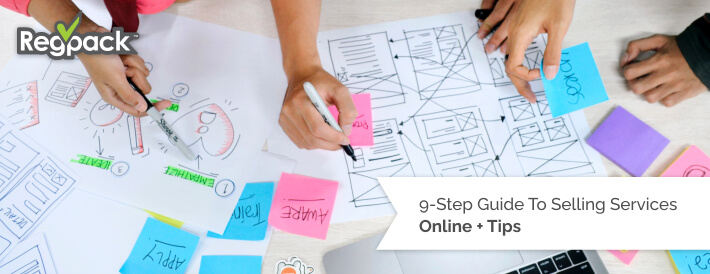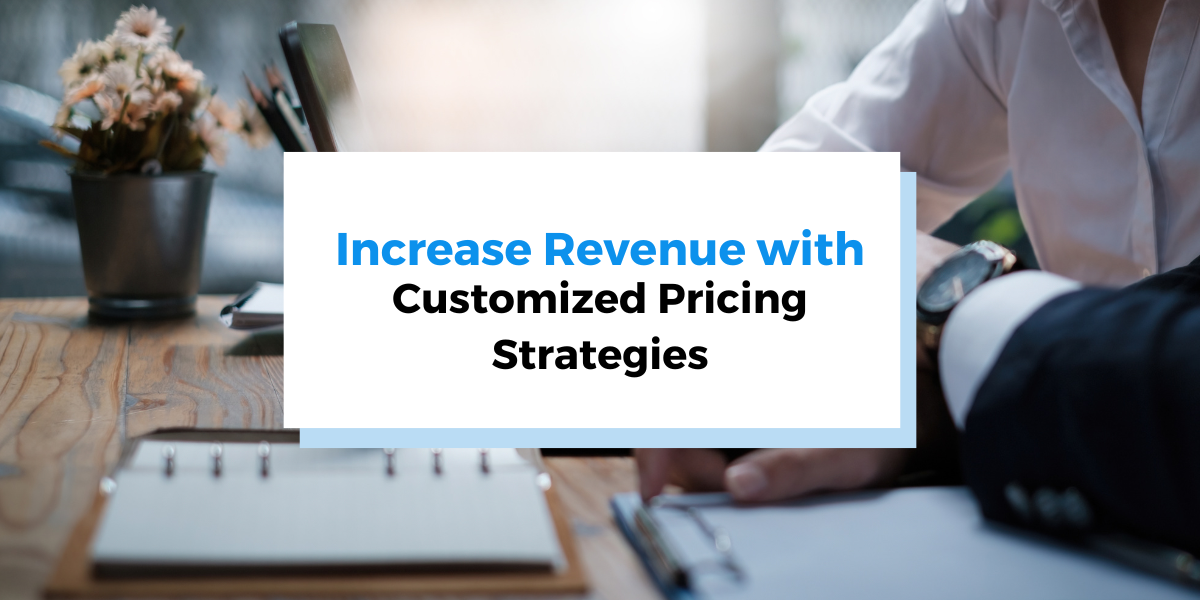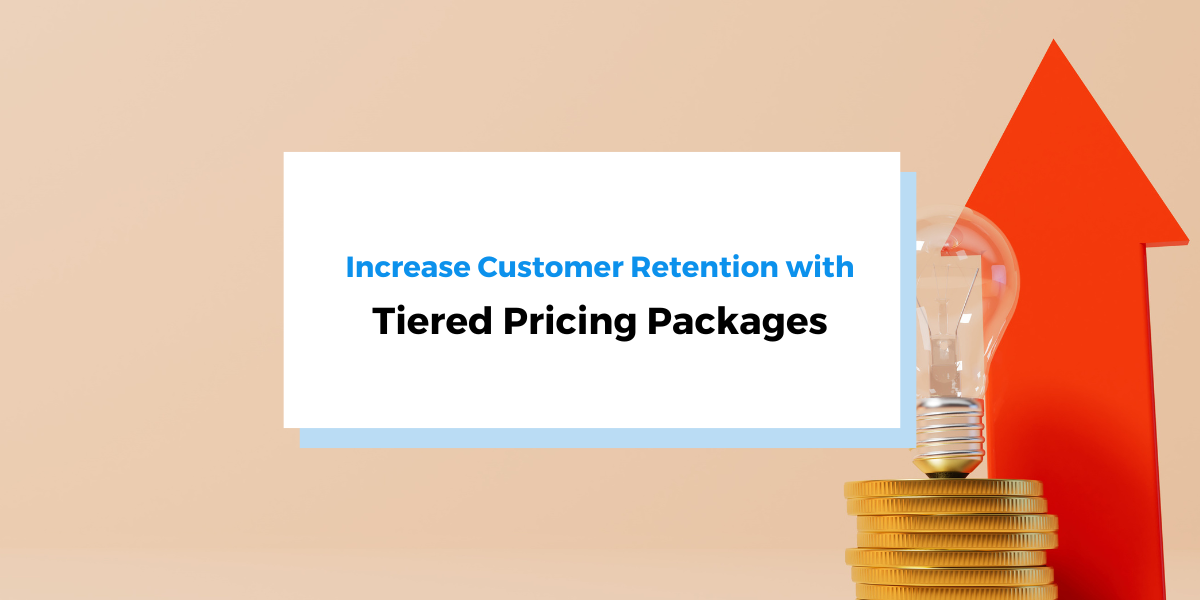eCommerce is growing at a steady rate. Studies show that the US B2B and B2C eCommerce industries are expected to reach $9 trillion and $4.5 trillion by 2021, respectively. And this trend is expected to continue to rise due to the pandemic-fueled eCommerce surge.
Adopting digital technologies is one of the effective ways to tap into this growth potential. By selling your services online, you’ll be able to expand into new markets (and even go global), generate high-quality leads, reduce costs, and shorten sales cycles. You’ll also be able to increase productivity by 16% and business value by 25%, according to the 2019 Economy Survey of Singapore.
But going digital isn’t an easy feat. It takes solid planning and execution to leave a mark on your target customers, especially in saturated online marketplaces.
So if you want to sell services online but don’t know where to start, this guide will point you in the right direction.
Advantages of Selling Services Online
A website, online marketplace, or digital sales channel is more than just a platform to manage content and collect payments. It serves as a control center where you can manage many aspects of your business, such as sales, customer service, inventory, commerce operations, and so on.
While it may seem challenging to move your business from brick-and-mortar to digital, service providers who do enjoy the following benefits:
- Improved customer experience
- Streamlined ordering process
- Additional revenue streams
- Increased ability to provide personalized shopping experiences across multiple sales channels and devices
- Make it easier for customers to find information with customized search navigation.
- Offer flexible payment methods, including financing options
- Integrate user data from your CRM or ERP software through APIs
- Optimize content for high conversion with compelling checkout promos
- Automate sales processes between suppliers, distributors, and businesses
- Lower operational and infrastructure costs
- Reach new customers
- Branded presence across digital channels and platforms 24/7
- High employee efficiency
Overall, using a platform to sell services online allows you to manage everything from a centralized location, creating numerous growth opportunities. You can start by setting up a branded online store through website builders like WordPress and creating an easy checkout process through Regpack.
How to Sell Services Online

Figure out what your customers want
What’s your ideal customer? What are their goals and needs? What language do they use? What kind of content do they read or watch? What types of payment methods do they prefer?
Identifying your target audience, their struggles, and interests will help you tailor your marketing efforts to address their needs. The best way to get to know your customers is by conducting market research.
To get started, find out what they like and don’t like. It could be as simple as customers dislike slow customer service, complicated checkout processes, or poor website design. Use what you already know from in-person experience and build your initial digital marketing strategy around it.
Once the data starts coming in, pull the numbers and analyze what you’re seeing. Use market research tools like feedback surveys, Google Analytics, Answer the Public, and Google Trends to get a pulse on what your target customers want.
For example, you can use Answer the Public to look up popular keywords or search terms around a particular subject in your field. This tool helps you discover questions that people are asking about your business.
Lastly, incorporate these insights into your marketing plan. Use Answer The Public’s search results to create topics for your social media and blog, for example. Writing relevant content will help you attract the right customers.
Using a data-driven approach takes the guesswork out of your marketing strategy and increases your chances of getting the results that you want.
Create an offer your customers need
Once you determine what your ideal customer is like, you can tailor your services to their unique needs. Consider offering a trial or a shorter version of the service you’re planning to introduce to the market.
Suppose you’re in the business of selling software as a service. In that case, you can create a beta version of your software and offer a one-month trial to your focus group as a way to test and refine your software services. You can also use this dry run to collect feedback from your testers so you can tweak your service for future customers.
Adjusting your services to your customers’ needs will make them feel satisfied and happy to recommend you to other people. Additionally, make sure to get their permission to post their favorable testimonials to your website to provide social proof and establish credibility.
Set your pricing
Now that you know what services to offer, you can start thinking about your pricing strategy. Conduct pricing research to understand how much you should charge for your services.
Pricing research involves:
- Calculating the costs associated with selling services online
- Looking at how much your competitors are charging for the same service
- Considering the time it takes to build a service
- Knowing how much your customers are willing to pay
- Coming up with a good profit margin.
Factor all these things into your calculations to determine which pricing structure makes better sense for your business: charging the customers by the hour or fixed rate?
Another thing to think about is whether you should allow customers to buy a membership or subscription to gain access to more premium services. This is where pricing tiers come in handy.
Building Pricing Tiers
If this is an option for you, consider breaking down your pricing structure into:
- Free consultation (for consulting services, agencies, telemedicine, etc.) or free trial version (for software, online learning, etc.)
- Fixed rate; if you know how much time it’ll take to complete a project; otherwise, choose hourly.
- One-time for annual subscriptions
- Monthly fee for ongoing subscriptions
- Premium rates for more exclusive services and features, such as dedicated account managers, access to more resources like reports, live webinars, and so on.
Pro tip: Curious about what types of e-payments you should offer? This guide explores the most common B2B payment methods and their pros and cons to help B2B companies find the best option for their business.

Payment Plans
Higher-tier services tend to alienate potential customers who can’t afford them. So, consider offering flexible financing options to support your multi-tiered subscription model and make repayments lighter.
For example, you should offer payment plans to customers who signed up for premium memberships and annual subscriptions to spread out payments. This method also encourages more people to upgrade when the pricing structure is perfect for their budget.
In Regpack, you can customize payment plans to allow customers to pay you in installments. You can also automate this process to make sure you’re getting paid regularly on time.
Interested? Request your free demo today!
Build a solid online presence
How do you let people know about your online business? Making a website is one. It’s where you can put all the essential information about your company, including a list of your services.
But your efforts shouldn’t end there. You also need to invest time and energy in building your credibility so that customers will feel confident in doing business with you. Luckily, there are several ways you can achieve that:
Secure your website
People tend to run away from websites with a “Not Secure” warning. In fact, 46% of users leave insecure websites, and some feel put off for good by brands that don’t have an SSL certificate.
Companies that sell products or services online have a lot to lose because customers never buy from websites with security issues.
So, it’s good practice to regularly check your website’s URL to see if it begins with “HTTPS” instead of “HTTP” (in Google Chrome). The “S” in HTTPS stands for “secure” and means that your website uses a TLS/SSL certificate that protects users’ data from cyberattackers.
Free SSL certificates are usually bundled with your web hosting plans. Alternatively, you can use third-party SSL certificate service providers for additional security. Third party SSL certificates offer better level of support compare to free SSL certificate. SSL certificate can be either single domain, multi domain or wildcard SSL certificate. It depends upon the website, which SSL would be fit.
Customer reviews
Allow your verified buyers to leave reviews on your website to provide some social proof to potential customers. 95% of customers read reviews online before making a purchase, so you shouldn’t overlook this marketing tactic. Plus, you can use reviews to keep enhancing your business processes and elevate your customer’s experience.
Testimonials
Testimonials are also a powerful tool to appeal to your customers’ emotions. There’s a reason why most shoppers read customer reviews – and that’s to help themselves make an informed decision. Consider publishing video testimonials from previous clients to your website to make prospects trust you and buy from you.
Content Creation
Position yourself as an industry leader by regularly churning out high-quality content. But make sure that the content you put out–whether they’re articles, podcasts, webinars, or multimedia social media posts–answers the questions that your target audience has in mind.
Creating content around questions that people ask allows your business to be the go-to website when they “Google” answers. Build a library of insightful and helpful content to keep them coming back for more. Over time, you’ll generate a steady stream of new and old readers who will share your content across different social channels and blog sites, boosting your online presence.
Look for ways to reach customers
Once your website goes live, the next step is to generate organic traffic through Search Engine Optimization. SEO is a method for getting your website on top of search engine results pages so that more people can find you, which means more visitors to convert into sales.
Aside from SEO, you should also consider using other techniques like the ones below to boost website traffic and sales:
- Blogging. Generate high-quality blog posts and incorporate relevant keywords to increase your page ranking and domain authority rating according to website authority evaluation.
- Social media. Connect and engage your social media followers to lead them to your website.
- Direct response marketing. Reach out via cold email outreach via email, telephony, or direct messaging.
- Affiliate marketing. Team up with influencers or experts in your industry who will help you bring new customers in exchange for an affiliate fee for each sale.
- Paid traffic. Increase web traffic through paid ads. Digital advertising platforms and networks that you can use are:
- Google Adwords
- Facebook Ads
- Yelp Advertising
- LinkedIn Advertising
Nurture your leads
Anyone who visits your website is a prospect, who you want to turn into a lead.
When qualifying your leads, it’s essential to create a sales funnel to guide them towards conversion. A sales funnel is made up of top, middle, and bottom stages:
[Insert Sales Funnel Stages.png]
Source: https://fitsmallbusiness.com/sales-funnel/
Identify where your potential customer might be in the different stages of the sales funnel when they’re visiting your website. Some prospects might just be looking for the best deals while others are ready to buy now. Also, note other prospects who might not know what they want yet, so they’re probably still collecting more information.
You need to create an offer for each stage that will encourage prospects to take the next step. For example, you can offer a free demo or helpful template for those ready to give your services a try. Offering something for free in exchange for their personal information is more attractive than requiring them to do something that costs money.
For prospects who are still unsure, consider offering a free downloadable report or eBook in exchange for their email address to keep them close. Educate them with your insightful newsletters to help them realize the next action to take to solve their problems finally, whether that means booking a free consultation or handing over their hard-earned money to you.
Pro tip: If you’re a SaaS provider, find out how you can improve customer adoption.
Make the sale
Your offer can make or break the deal you’re trying to close with a prospect. It is the service you provide, how you intend to deliver that service, your terms and conditions, and your rate. To help you close the sale, here are some tips:
- Be clear and direct. Customers contact you because they’re interested in getting the results that your services promise to deliver. However, they don’t understand how a product or service really works in some cases, so it’s crucial to spell things out in great detail and be very specific. This way, prospects will know what they’re going to get.
- Give customers reasons to hire you. Highlight your service’s unique value propositions to make it stand out from the competitors. Ask yourself, what makes my services better than brand X? What makes them work? Your USPs are the things that enable you to deliver your brand promise to your prospects.
- Offer a strong guarantee. Prospects will trust you more if there’s less risk involved in doing business with you. For example, offering a free trial (no strings attached) or a 100% money-back guarantee if a user isn’t satisfied with the software after 15 days will make them think they’ve got nothing to lose, so they’ll be more motivated to give it a try.
- Convert prospects with coupons or discounts. Offer a discount to free-trial users and new members to incentivize them to become long-term customers. An advanced online payment system will make this process easy for you. In Regpack, you can create discount codes or configure the system to apply discounts automatically when multiple services are booked.
Map the customer journey
Customers’ needs change over time, and with every new service they try, there’s a learning curve. Thus, they’re going to need a partner who would guide them along the way, from teaching them the basics to advanced features of your new services. Keeping your customers engaged increases loyalty and retention, as you make yourself a part of their daily lives.
Here’s a couple of techniques you can use when mapping the customer journey:
- 1st month. Invest time in educating your customers about the basics of your products and services. Create tutorials, webinars, or onboarding email sequence to make them dependent on your help and expertise.
- 2nd month and beyond. As you establish yourself as an authority, build more credibility by showing the advanced capabilities of your services. Use this time to upsell or offer upgrades that will allow customers to maximize your service’s potential, thereby providing them with more value.
Build a loyal customer base and improve customer retention
Loyal customers are clients who are genuinely devoted to your brand. However, building a loyal customer base doesn’t happen overnight. It involves a long process and requires implementing multiple strategies. Improve customer loyalty and retention with our tips below:
- Create a loyalty program.
- Build an online community of brand advocates.
- Ask for customer feedback.
- Display customer reviews.
- Improve user experience.
- Offer personalized recommendations and offers.
- Generate better content than your competitors.
- Offer support via Knowledge Base.
- Listen to customer feedback.
- Don’t neglect your long-term customers.
In general, building a steady stream of loyal customers starts with directing your focus on your existing customer base. Make them stay with a loyalty program, show them that you care with a good feedback process, and improve your services by listening to their feedback.
Pro tip: Read “Customer Retention Measurement: Key Metrics to Track” for more tips.
Where to Sell Services Online

Aside from creating your website, you can also join online platforms and marketplaces that connect service providers to people looking for industry-specific services. These sites will help you:
- Gain access to valuable resources
- Connect with other pros in your field
- Establish a customer network
- Grow your business
Whether you’re a hairstylist, career consultant, tour guide, teacher, plumber, or web developer, there’s an online marketplace for you. Check out some of the most popular platforms for pros below:
Coaching and Sales
Culinary and Travel
Fitness, Beauty, and Wellness
Home Maintenance and Repair
Freelance (remote work)
People and Pet Care
Teaching/Tutoring
- Lingoda
- Skillshare
- Teachers Pay Teachers
- Udemy
- AquaMobile
- TakeLessons
- Tutor Matching Service
- Verbling
- Wyzant
- Thinkific
- Kajabi
Pro tip: Click here to learn how to start an online course business.
Voice Over or Narration
Web Design and Development
Translation
Writing and Research
- Copify (UK)
- Scripted
- Wonder
- CrowdContent
Virtual Assistant
Start Selling Services Online with Regpack

If you’re planning to build your website, you can’t sell anything without a registration and checkout system. It is one of the essential tools in your online business arsenal.
For example, Regpack allows you to collect customer information, provide different payment methods, automate recurring billing, and charge customers the correct amount at a suitable date.
Automating your payment collection processes will not only free up some precious time but also make it easy for your customers to complete transactions. Automation also minimizes revenue loss due to confusion on orders and pricing.
Other Regpack features that you can use to your advantage are:
- Customizable onboarding process. Build your registration forms to collect specific information from your customers.
- Discounts and coupon codes.
- Payment plans. Allow your customers to pay high-ticket items in installments on a schedule that works for everyone.
- Unlimited reporting. Retrieve data and customize data sets in any way you need.
- Built-in sales and payment reports that you can use to make accounting easier.
- Display special offerings on your website with little or no coding required.
Want to see it for yourself? Get your free demo here!
Take the Next Step
Selling services online can be complex. There’s a lot of moving parts that can overwhelm you quickly, from building your website, creating offers, launching marketing campaigns, generating leads, converting leads into sales, to establishing a loyal customer base.
So, the key is to take things one step at a time. Don’t hesitate to use digital tools and software to automate some repetitive tasks like payment collection so you can eventually pass them off to your staff, allowing you to focus on core business functions.





















